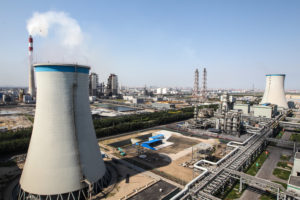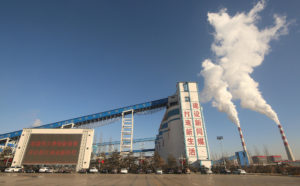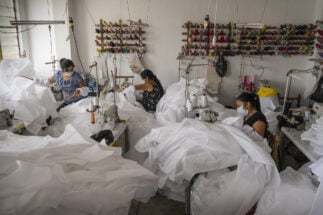Late May saw the release of a consultation draft of China’s 2020 Green Bond Catalogue. It removes controversial coal investments such as “clean” coal use, coal-fired power, coal mining and coal washing, bringing China into closer alignment with international standards. The move has been praised widely, both at home and abroad.
Released by China’s central bank (the People’s Bank of China, or PBOC), the National Development and Reform Commission (NDRC) and the China Securities Regulatory Commission (CSRC), the new catalogue may also unify various green bond standards used in China.
But critics have pointed out that it could be far greener. It still includes, for example, a considerable number of oil and gas-related projects as well as large-scale hydropower.
The original consultation period concluded on 12 June, but curiously a new notice of public consultation appeared on PBOC’s website on 8 July, extending the period to 6 August. A few changes have been made to the earlier version of the draft catalogue, including the addition of “integrated management of coal-mining subsidence areas”. Coal production and utilisation remain removed from the list.
According to the definition in the draft document, green bonds are used to raise funds specifically for environmentally friendly sectors, projects or economic activity. Green bonds can help the government, businesses and financial institutions raise money for product development and manufacture, technological improvements, facilities upgrades and trading activity in fields such as energy saving and emissions reduction, prevention and remediation of pollution, and ecological conservation – thus making the economy greener.
What does the removal of coal mean?
China’s green bond market started with the PBOC’s 2015 Green Bond Catalogue. The NDRC later published its own Guidelines on Issuing of Green Bonds. The two defined green financial bonds and green enterprise bonds respectively.
Both of these documents included coal projects. The 2015 catalogue included “clean coal use”, as well as ultra and supercritical coal-fired power plants of 300MW and over. Coal mining and washing were also included. The NDRC’s guidelines supported “clean coal use”, and emissions reduction and energy-saving refits for coal-fired power plants.
But these projects came in for criticism on the international markets over the following five years. For mainstream international investors, fossil fuels simply could not be green or clean. For example, Deborah Lehr, vice-chairman of the Paulson Foundation, an independent thinktank, said that China may lose recognition by some US investors if it classed “clean” coal-fired power as green.
Greenpeace figures show that China has been adding new emissions from green bond-supported coal projects ever since 2016. A company bond worth 800 million yuan (US$140 million) issued by a firm in Zhejiang province was used to expand a combined heat and power facility, creating 900,000 tonnes a year of extra carbon emissions. In 2017, a firm in Shanxi province raised 1.5 billion yuan from green bonds to build a 500,000-tonne coal–chemical plant which, operating at full capacity, could produce an estimated 1.9 million tonnes of carbon dioxide emissions every year.
In October 2017, Ma Jun, chair of the China Society for Finance and Banking’s Green Finance Committee, told the media that defining green bonds involves both technology and the country’s environmental priorities. As China had an urgent need to improve air quality, and “clean coal” reduces sulphur dioxide and nitrogen oxides emissions, it qualified. But if reducing carbon emissions is a priority, coal-fired power would be banned.
30%
of China’s green bonds were considered “uninvestable” due to small numbers of coal assets within them
Despite the controversy, it was a full five years before coal projects were removed from the catalogue, with the new consultation draft.
Xie Wenhong, China programme manager for the Climate Bonds Initiative (CBI), told China Dialogue that an assessment his organisation carried out in late 2019 estimated that almost 30% of the country’s green bonds were considered “uninvestable” by international investors due to a mere 2% of coal assets within them.
Xie says the removal of “clean coal” may mean climate change is becoming a more important part of green finance targets. While climate-change mitigation and adaptation have been more important internationally, China’s priority has been controlling pollution, accounting for 13% to 18% of bonds issued. He said: “Although clean use of fossil fuels can reduce pollution, this makes only a limited contribution to reducing greenhouse gas emissions and in the long term does not help technology and investment become lower carbon. Removing fossil fuel projects from the catalogue will significantly increase international alignment and importance, and aid regulators integrating climate targets into the green finance system, helping everyone more actively tackle the systemic risks climate change poses for the financial industry.”
Coal may have been removed, but oil and gas extraction, including shale and tar sands, is still in there.
Xie added that the new catalogue will help authorities and specialist bodies design climate investment and disclosure standards, bringing China closer to achieving its climate goals. These institutions include the PBOC, the China Banking and Insurance Regulatory Commission, the Ministry of Ecology and Environment, and the China Society for Environmental Sciences’ Climate Investment and Finance Association.
Zhang Kai, climate and energy project manager with Greenpeace, agrees, saying that by removing “clean coal” the PBOC is telling financial institutions what is green – and that will play an important role in guiding future investments, helping form a consensus on China’s green and low-carbon transition and demonstrating the country’s commitment to achieving this.
And while it is the removal of coal-related projects that is getting the attention, other changes also indicate a shift to tackling climate change. The draft catalogue now includes hydrogen power, as well as the capture, use and storage of carbon dioxide. There is also much more content and detail on smart power grids, power storage and the energy internet, all of which will boost renewable energy efficiency and increase the power grid’s stability and capacity to integrate renewables. The draft also includes the trade in sustainability-certified commodities for the first time, referring to schemes run by the Roundtable on Sustainable Palm Oil, the Roundtable on Responsible Soy and the Forest Stewardship Council. Deforestation associated with cultivation of these commodity crops dramatically exacerbates emissions of greenhouse gases.
Attracting overseas investors
The industry thinks the new catalogue will make China’s green bonds more attractive to overseas investors.
Xie Wenhong told China Dialogue that a CBI survey found a clear majority of European institutional investors believe there is an under-supply on the green bond market. Investors need to ensure diversity when allocating funds, and green bonds are no different. China is one of the most attractive emerging markets, with a more stable exchange rate than others and better returns on yuan-denominated bonds than Euro and dollar alternatives. China’s economic cycle is offset against other markets, meaning the price of yuan-denominated assets and those of equivalents in other markets do not move in step. Investors can therefore achieve diversity and distribution of risk by investing in China’s green bonds, improving the risk-adjusted return on their portfolio.
350 billion yuan
The value of green bonds issued by China in 2019
And China’s green bond market has expanded at incredible speed since opening in December 2015. By the end of 2016, China accounted for 40% of green bonds issued worldwide, more than any other nation. Since then, China’s bond market has continued to expand, although its proportion of the global total has fallen somewhat. Despite the impact of the coronavirus, China issued 26.19% more green bonds in the first quarter of this year than in the same period in 2019.
On the other hand, in 2016, the Green Finance Committee of the China Society for Finance and Banking estimated that China needed at least 2 trillion yuan ($330 billion) of climate funding ever year. Last year, China issued green bonds worth 350 billion yuan. So the market still has much to contribute.
Julien Foll, an analyst with AXA Investment Management, said in an interview with the Financial Times that his firm previously had to exclude Chinese green bonds from its portfolios, as the inclusion of “clean coal” conflicted with internal investment policies. Its removal from the catalogue will make investing in China’s green bonds much easier.
Thede Ruest, head of emerging markets debt at Nordea Asset Management, was happy to see China taking measures to bring its green bonds into line with international standards. He thinks that governance issues mean Chinese bonds are still not a top-quality asset, but steps made on environmental issues are encouraging – and something overlooked and under-appreciated by investors.
But overseas investors still face problems when buying Chinese green bonds. Xie Wenhong told China Dialogue that these include a lack of information channels and hedging tools, and low transparency in China’s rating systems. Differing standards remain an issue – with the removal of “clean coal”, the biggest gap between China and international markets is on management of use of raised funds. Currently 30-50% of funds raised via green bonds in China can be used for general operations – internationally, that figure is only 5%. And international investors are requiring ever more transparency on how these funds are used, requiring Chinese bond issuers to reveal more information. “To some degree, these differences deter overseas investors from allocating funds to Chinese green bonds, but as channels open up, quotas increase and standards align we predict China’s green bonds will become much more attractive” he says.
Aligning standards
When published, the new catalogue will bring domestic green bond standards into alignment. It may even unify standards of green projects of any kind, not limited to those issuing bonds, helping the development of the green economy in general.
Guo Peiyuan, chairman of SynTao Green Finance, a third-party green bond verifier, said in a recent opinion piece that the two official documents on the green bond sector were issued by different bodies and have different scopes: financial bonds, company bonds and debt financing instruments are regulated by the PBOC’s 2015 Green Bond Catalogue, while corporate bonds come under the NDRC’s Guidelines on Issuing Green Bonds. Differences between the two documents can leave bond issuers stuck.
In China, natural gas is regarded as relatively clean, as it doesn’t create air pollution. But it does produce carbon dioxide.
But the fact the new draft catalogue has been jointly produced by the PBOC, NDRC and CSRC itself means these systems are being combined. Meanwhile, a report from the International Institute of Green Finance at the Central University of Finance and Economics points out that the new draft catalogue now aligns with the Green Industry Guiding Catalogue and a 2019 PBOC document on green lending. This will make project verification and financing easier, and allow for fairer competition between actors on the green finance market.
Despite this, there are still prominent differences on fossil fuels between these documents. Guo Peiyuan said in his opinion piece that the Green Industry Guiding Catalogue contains multiple fossil-fuel projects when compared with the new draft catalogue, including “clean” coal utilisation and production, “clean” oil production and low-emission upgrade for coal-fired power plants.
Green bonds – could be greener
And although the draft catalogue sends multiple positive signals, it doesn’t go far enough. Coal may have been removed, but energy saving upgrades for fossil-fuel powered furnaces, cleaner upgrades for oil and petrochemical firms and industrial parks, oil and gas extraction including shale and tar sands, and the manufacturing and trade in non-coal fossil fuel energy equipment are still in there. Nuclear and large-scale hydropower projects are also included, despite differing opinions on these internationally.
One green financing consultant used natural gas as an example: “In China, natural gas is regarded as relatively clean, as it doesn’t create air pollution. But it does produce carbon dioxide.” Being a fossil fuel, it can’t be regarded as “green” overseas, he added.
Hana Heineken, a member of environmental group Forest Action Network, praised China’s decision to remove coal from green bond projects, but hopes to see more progress: “The question is whether (the trend) will extend to oil and gas funding, especially liquid natural gas, which can be equally destructive.”
This article was updated on 10/07/2020.









